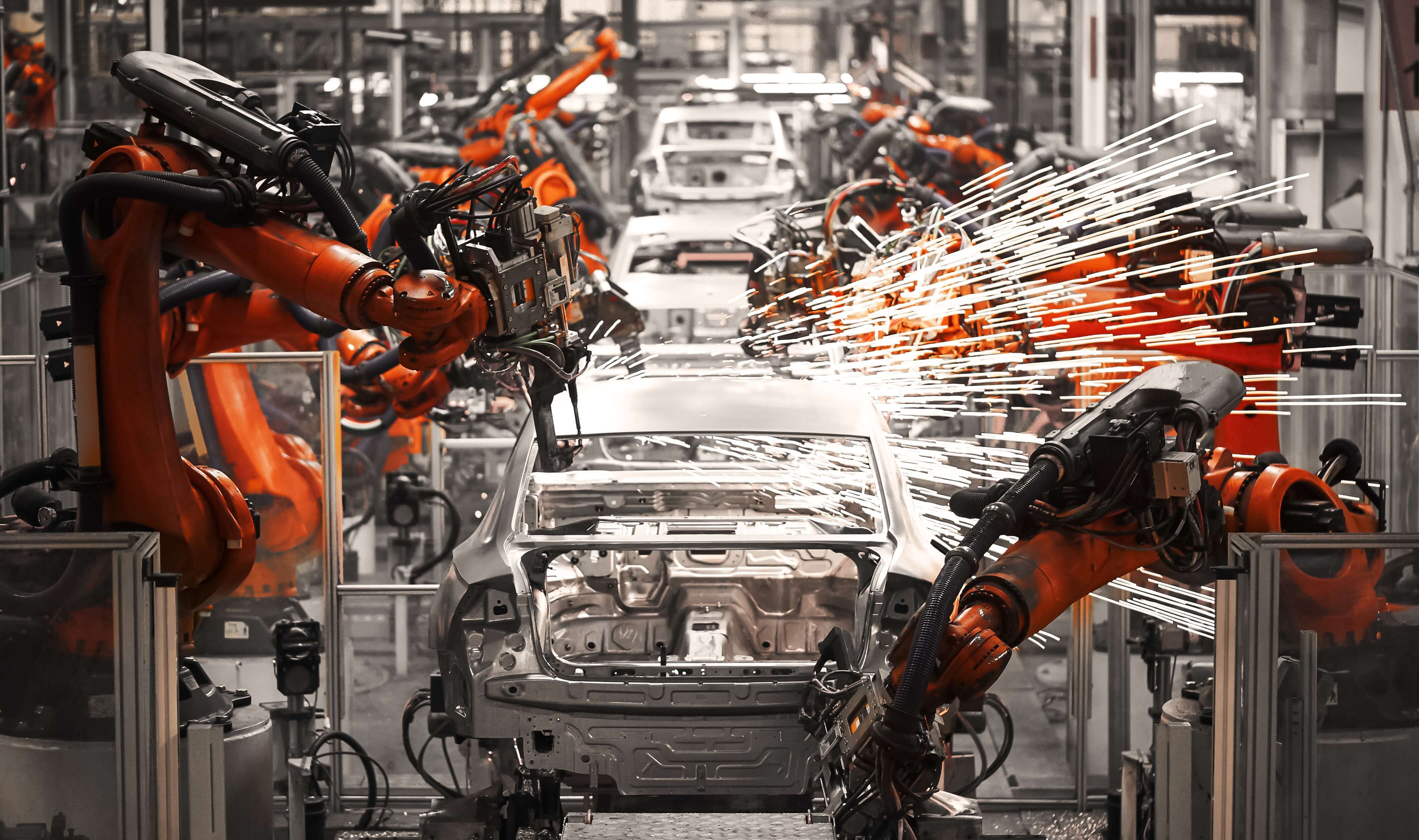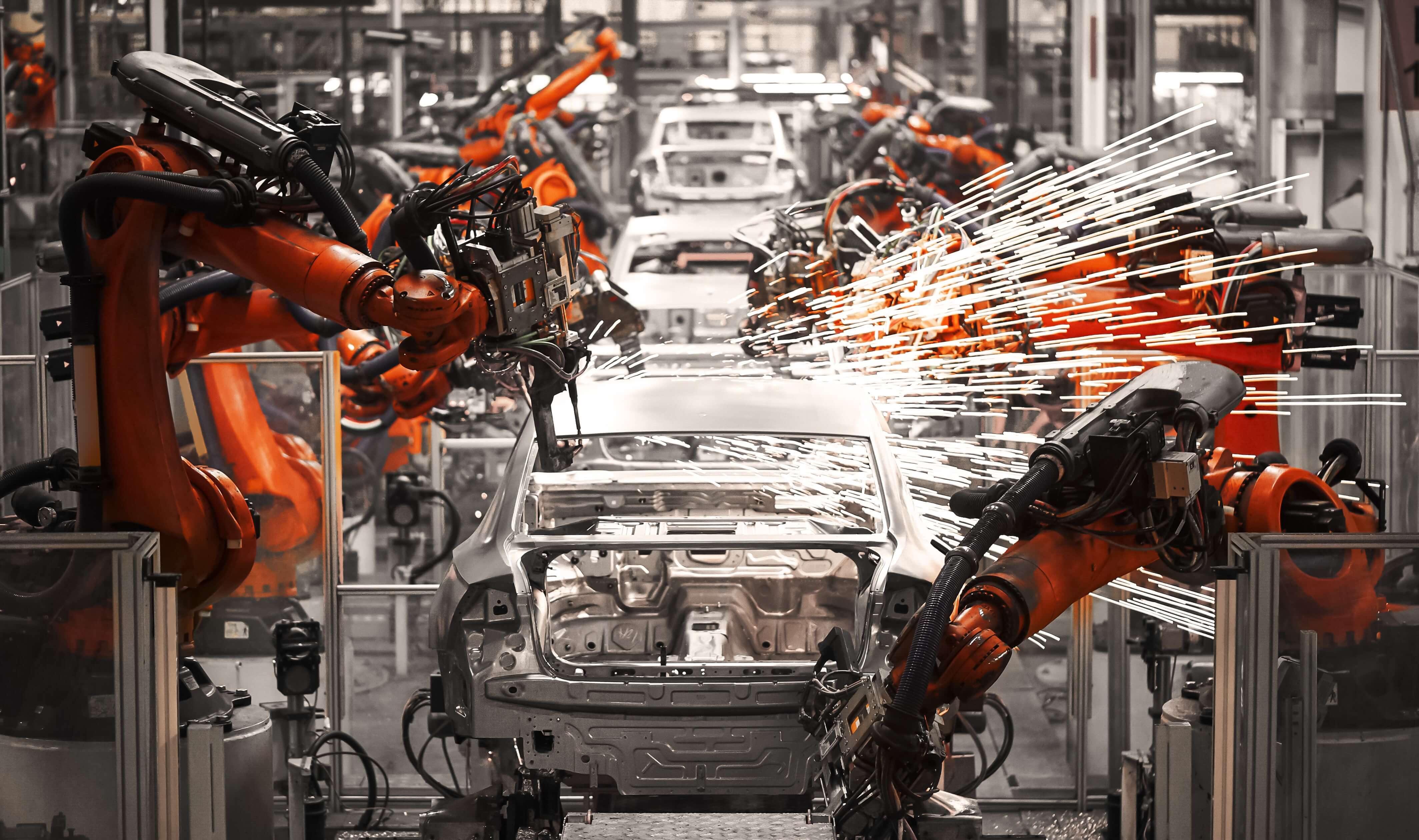CNC Machining in the automotive industry
CNC machining plays a pivotal role in automotive manufacturing due to its high precision, speed, repeatability and flexibility.
What is CNC machining?
Computer Numerical Control (CNC) machining is a production technique that uses computer-controlled machines to accurately cut, shape and form parts. It can create complex geometries from materials such as metal (aluminum, steel, titanium), plastic or wood.
The term CNC machining covers several processes, including cutting, milling, turning, drilling, grinding, routing and polishing. By following pre-programmed instructions, CNC machines ensure high levels of consistency, accuracy and reliability.
CNC machining is very cost-efficient as waste material, defects, manual work and setup times are all minimized. This makes it suitable for both large and low-volume production and for creating one-off custom pieces. Modern CNC machines boast advanced features like multi-axis capabilities, automated tool changers and advanced automation, further optimizing production efficiency.
The versatility of CNC machining has seen it adopted in every manufacturing sector, including automotive, aerospace, electronics, medical and more. Additionally, the advent of desktop-sized CNC machines has made the technology accessible to hobbyists and makers. These miniaturized machines are usually more user-friendly and tailored for smaller-scale projects.
To learn more, visit our 3DEXPERIENCE GUIDE TO CNC MACHINING

How CNC machining transformed the automotive sector
The introduction of CNC machining has revolutionized automotive manufacturing, redefining the way vehicles are designed, developed and made. This critical technology combines incredible precision and consistency with unmatched speed and versatility.
CNC machining has unlocked new innovations, accelerated product development cycles and enabled automotive manufacturers to produce high-quality, complex parts at a lower cost and with minimal waste.
CNC machining brings many advantages to the automotive sector, including:
- UNPARALLELED PRECISION AND ACCURACY
Precision is of utmost importance in the automotive sector. CNC machining can consistently and accurately produce parts to exact specifications and tolerances. This is crucial in automotive manufacturing, where even minor variations can affect vehicle performance, safety and reliability.
- ENHANCED EFFICIENCY AND PRODUCTIVITY
The automation and programmability of CNC machines enable continuous and uninterrupted production runs, removing the need for human intervention between operations. Some CNC machines are also capable of multi-axis machining and performing operations on different surfaces of a part at the same time.
By reprogramming machines, manufacturers can rapidly switch between producing one component and another. This reduces changeover time and means different parts can be made on the same machine during a single shift. These capabilities help accelerate production cycles, reduce downtime and increase overall output.
- COMPLEX PART MANUFACTURE
Automotive parts can be marvels of shapes, curves and contours. CNC machining enables the production of highly complex parts that would be challenging or impossible to make using traditional methods. With multi-axis capabilities, CNC machines can move cutting tools in multiple directions, skillfully carving out intricate features and details. The flexibility and versatility of CNC machines have led to the development of more sophisticated automotive parts, whether an engine block, transmission gear or suspension component.
- DESIGN FLEXIBILITY AND ITERATION
The automotive market is a dynamic, ever-evolving environment that demands adaptability. CNC machining offers automotive manufacturers the flexibility to iterate and refine designs rapidly. Through Computer-Aided Design (CAD) software, design engineers can easily create and modify part geometries. These designs can then be directly translated into machine instructions for CNC machining, reducing the time and effort required for design changes. This enables automotive manufacturers to respond quickly to market demands and design improvements.
- SUPERCHARGED INNOVATION
The automotive sector thrives on innovation. CNC machining enables automotive designers and engineers to unleash their full creative potential. Its ability to transform intricate designs into reality has paved the way for advancements in aerodynamics, weight reduction, vehicle performance, fuel efficiency and safety.
- COST SAVINGS
While industrial CNC machines can require sizeable upfront investments, they can help reduce manufacturing costs in the long run. CNC machining eliminates the need for dedicated jigs, fixtures and specialized tooling for each part, as the machines can adapt to different designs with minimum setup time. CNC machines also reduce waste and costs by optimizing material use. The overall efficiency gains and improved productivity also contribute to cost reductions.
Applications of CNC machining in the automotive sector
The versatility of CNC machining sees it produce a vast array of automotive parts with different materials, including metals, plastics and composites. Just some of these parts include:
- ENGINE COMPONENTS
CNC machining is used extensively in the automotive sector to manufacture engine component such as heads, engine blocks, crankshafts, camshafts, pistons, valves and connecting rods. These parts require exceptional precision and intricate machining to ensure optimal performance, durability and safety.
- TRANSMISSION COMPONENTS
CNC machining is used for a wide variety of transmission parts such as gears, gearboxes, shafts and clutch components. These parts must be machined to tight tolerances to ensure efficient power transfer, seamless shifting and a smooth driving experience.
- SUSPENSION AND STEERING COMPONENTS
CNC machining is crucial to the production of suspension and steering components, including control arms, tie rods, ball joints, steering knuckles and wheel hubs. These parts demand high strength and precise machining to ensure stability, control and safety while driving.
- BRAKE SYSTEM PARTS
CNC machining is involved in manufacturing various brake system components such as brake calipers, brake rotors, brake brackets and brake master cylinders. These parts require precision machining to provide reliable and consistent braking performance, ensuring safety and responsiveness.
- EXHAUST SYSTEM COMPONENTS
CNC machining is utilized to produce exhaust system components like exhaust manifolds, headers, catalytic converters, and mufflers. These parts require intricate machining to optimize exhaust flow, reduce backpressure and enhance engine performance.
- INTERIOR AND EXTERIOR TRIM
CNC machining is employed to manufacture interior and exterior trim parts, including dashboard components, door handles, trim panels, grilles, emblems and decorative accents. CNC machining enables the creation of intricate designs, precise cutouts, and fine details that enhance the aesthetics and functionality of the vehicle's interior and exterior.
- CUSTOMIZED MODIFICATIONS
CNC machining allows for precise alterations or adaptations to existing automotive parts or systems. Thanks to CNC machining, manufacturers can tailor parts to meet specific requirements, such as performance upgrades, aesthetic enhancements or integration with aftermarket components.
Automotive manufacturers can also use the technology to incorporate logos, emblems or serial numbers directly into the part design. Customized features, such as specialized textures, patterns or finishes, can also be achieved through CNC machining, adding aesthetic appeal and exclusivity to parts.
- CHASSIS AND BODY COMPONENTS
CNC machining is used to produce various chassis and body components, including frame members, brackets, mounting points, structural supports, and body panels. These parts require accurate machining to ensure proper fit, structural integrity and overall vehicle strength.
- ELECTRICAL COMPONENTS
CNC machining is involved in manufacturing various automotive electrical and electronic components, such as connectors, sensor housings, instrument cluster components and control module enclosures. CNC machining ensures precise dimensions and intricate features necessary for electrical connectivity and component integration.
- PROTOTYPING
Prototyping allows engineers and designers to create models of automotive parts and assemblies, enabling them to evaluate the design, fit and functionality before proceeding to full-scale production. CNC machining enables the rapid creation of intricate and precise prototypes that closely resemble the final components.
Limitations of CNC machining in the automotive sector
While CNC machining offers many advantages, it does have limitations. Although many of these can be overcome through process optimization, tooling advancements and a thorough understanding of the design requirements.
- HIGH INITIAL INVESTMENT
Setting up a CNC machining operation requires a significant initial investment. The cost of acquiring CNC machines, tooling, software and skilled personnel can be substantial, especially for small or medium-sized automotive businesses.
- DESIGN LIMITATIONS
Although CNC machining is highly versatile, it has certain design limitations. For example, there may be constraints related to undercuts, deep cavities or internal features that are difficult to access with standard cutting tools. Complex geometries and internal threads may involve specialized tooling or additional operations, adding complexity and cost to the manufacturing process.
- PRODUCTION TIME FOR COMPLEX PARTS
While CNC machining is efficient for many applications, the production time for complex parts can be relatively long. Complex parts may require multiple machining operations or longer cycle times. Balancing precision and efficiency for such parts can be a challenge, especially when tight deadlines need to be met.
- MATERIAL RESTRICTIONS
CNC machining can work with a wide range of materials, including metals, plastics and composites. Yet, certain materials, like high-temperature alloys or some advanced composites, may pose challenges due to their hardness, brittleness or heat sensitivity. Machining these materials may require specialized tooling, cutting strategies or extra precautions.
- WASTE AND MATERIAL EFFICIENCY
CNC machining typically produces waste in the form of chips and scrap material, known as swarf. While efforts can be made to optimize toolpaths and reduce material waste, some designs still generate more waste than others. Maximizing material efficiency and minimizing waste can be a consideration for manufacturers seeking to reduce costs and improve sustainability.
- OPERATOR SKILL AND TRAINING
CNC machining requires skilled operators to program, operate and maintain the machines effectively. The complexity of CNC programming and operation requires proper training and expertise. Finding and retaining skilled CNC operators can be hard, particularly in regions where qualified personnel are in short supply.
- LARGE-SCALE PRODUCTION
CNC machining is well-suited for small to medium-batch production. However, for large-scale production volumes, other manufacturing methods, such as die casting or injection molding, may be more efficient and cost-effective. CNC machining may require extra automation, specialized equipment or process optimization for large-scale production.
The future of CNC machining in the automotive sector
The automotive sector is undergoing several major transformations at once as a result of electrification, autonomous driving, digitalization, changing consumer expectations and sustainable manufacturing. Despite this, CNC machining will likely remain a vital technology in the automotive sector.
For example, how CNC machining is used in the production of electric vehicles (EVs) compared to internal combustion engine (ICE) powered vehicles may differ in certain areas. Yet, both have enough parts and components in common that CNC machining will continue to be instrumental in producing these and other future vehicles.
- INCREASED AUTOMATION
Automation will play a significant role in the future of CNC machining. Advancements in robotics, machine learning (ML) and artificial intelligence (AI) enable greater automation and integration of CNC machines into production lines. This automation reduces manual intervention, enhances efficiency, improves accuracy and allows for continuous operation, thereby increasing productivity in the automotive sector.
- ADVANCED TOOLING
CNC machining is evolving with the introduction of advanced tooling and cutting technologies. Improved tool coatings, geometries and materials will all help enhance cutting speeds, tool life and surface finish quality. High-speed, multi-axis and adaptive machining techniques are also becoming more prevalent, enabling faster production and greater precision in complex automotive parts.
- 3D PRINTING
Integrating CNC machining with 3D printing processes holds great potential in the automotive sector. This combination allows for the creation of complex parts with the benefits of both technologies.
CNC machining can be utilized for post-processing, surface finishing and adding final details to 3D-printed components, resulting in high-quality finished automotive parts with optimized functionality.
- SMARTER MACHINING
CNC machines are becoming increasingly more intelligent and adaptive. Sensor technologies, IoT (Internet of Things) connectivity, and AI-based algorithms are being used to monitor and optimize machining processes in real-time.
Intelligent systems can detect tool wear, adjust machining parameters, and make predictive maintenance decisions, leading to higher productivity, reduced downtime and improved quality.
- SUSTAINABLE MANUFACTURING
With environmental concerns growing, sustainable manufacturing practices are gaining importance in the automotive sector. CNC machining can help meet sustainability targets by optimizing material use, reducing waste and implementing energy-efficient strategies.
Advanced machining strategies, such as near-net shape machining and optimized toolpath generation, can further minimize material waste and energy consumption, contributing to a more sustainable manufacturing approach.
Get multiple quotes for your parts in seconds
